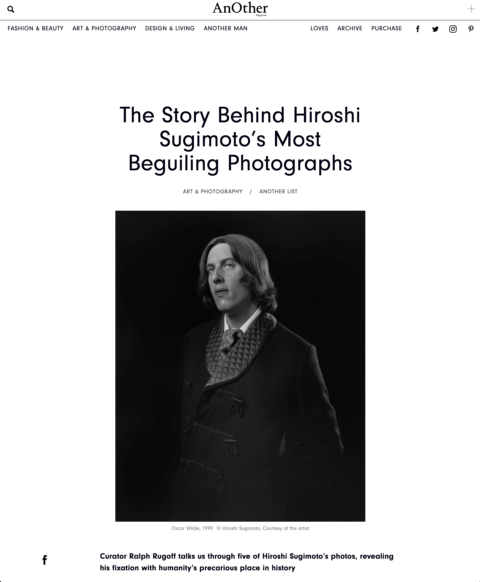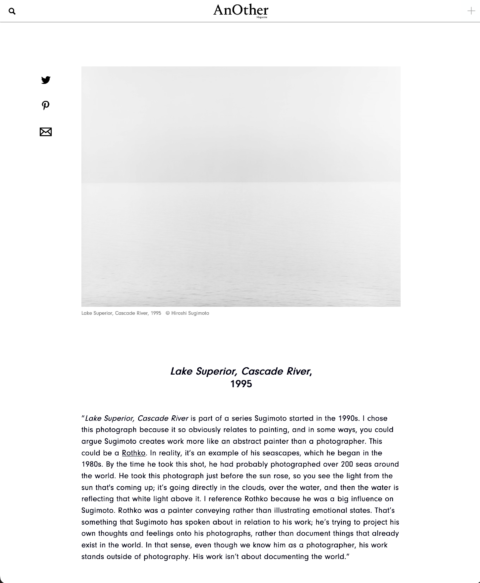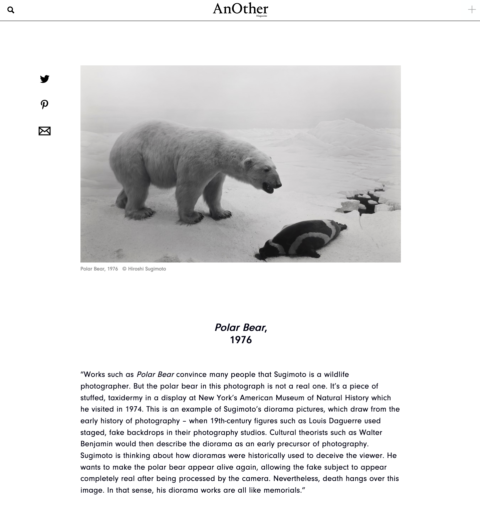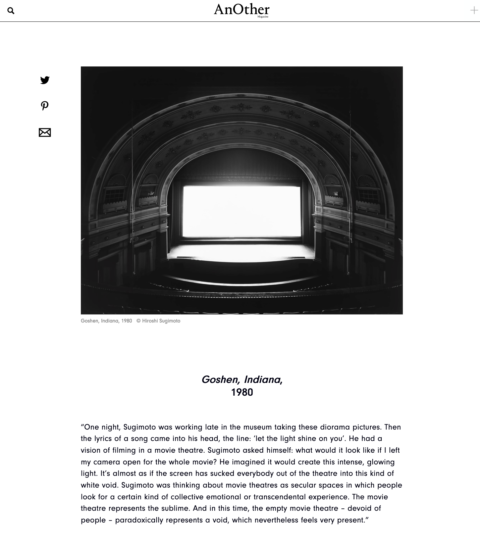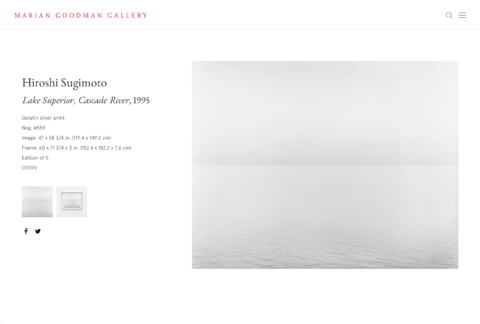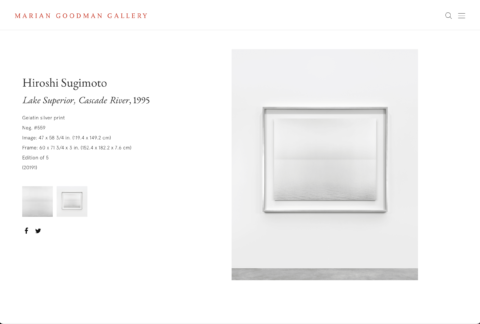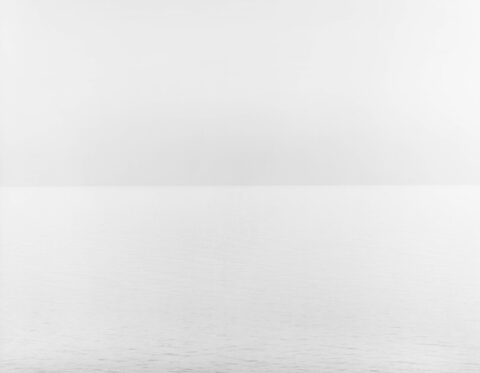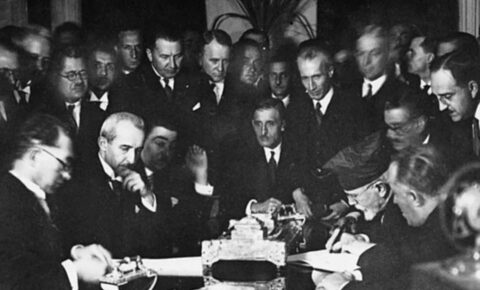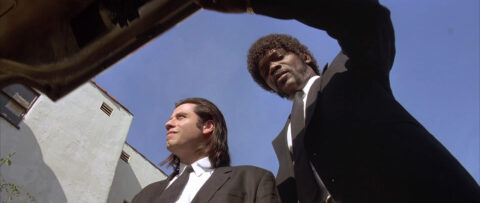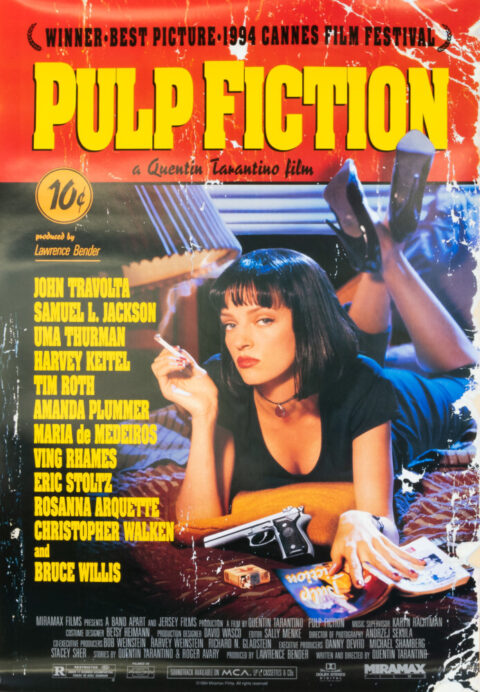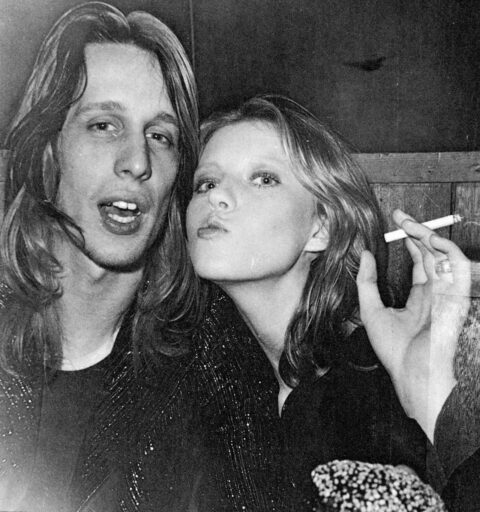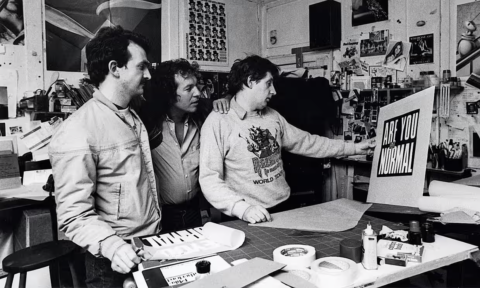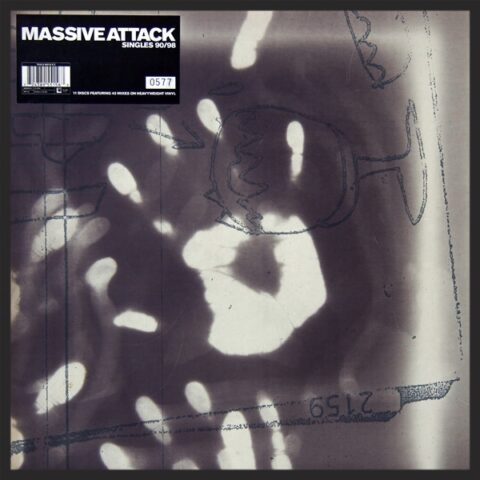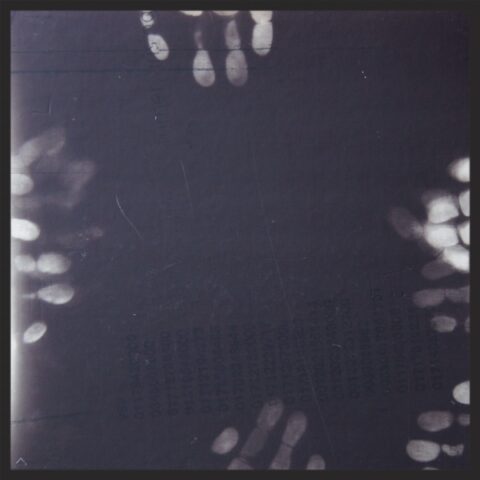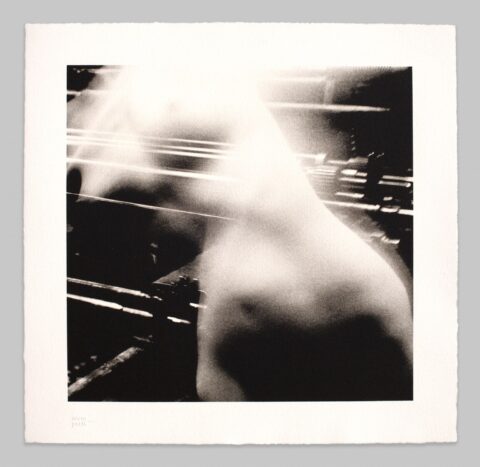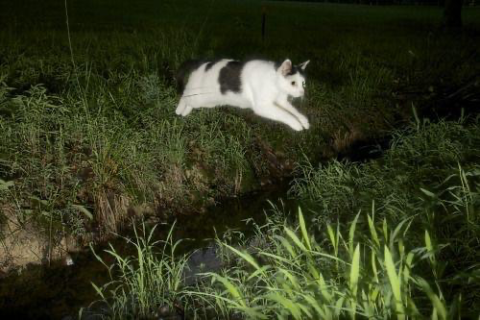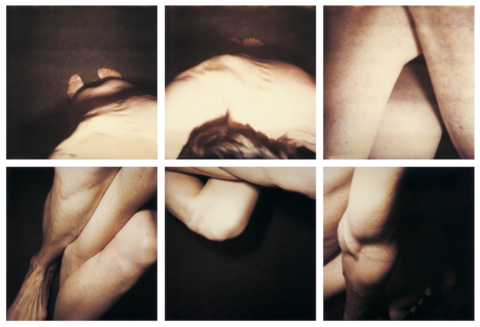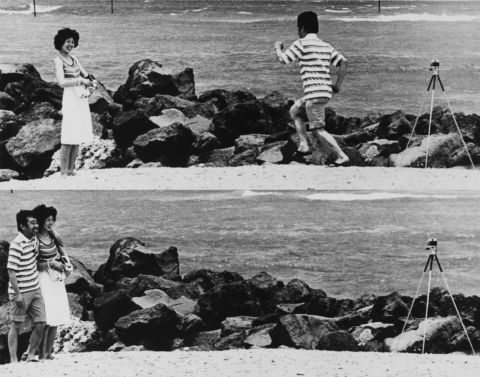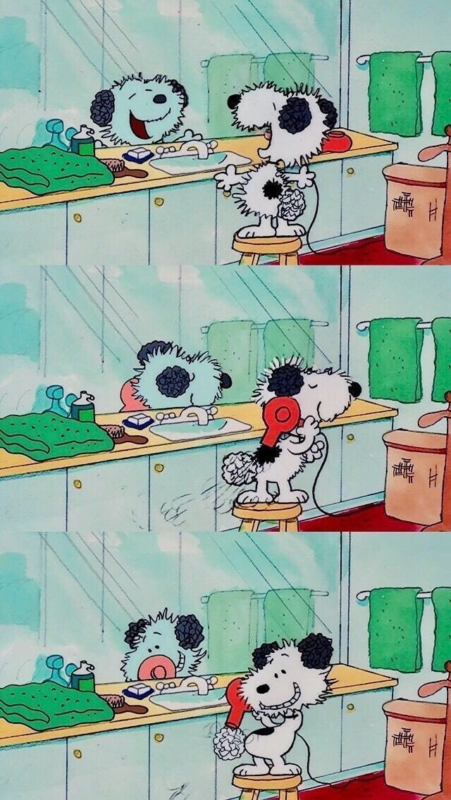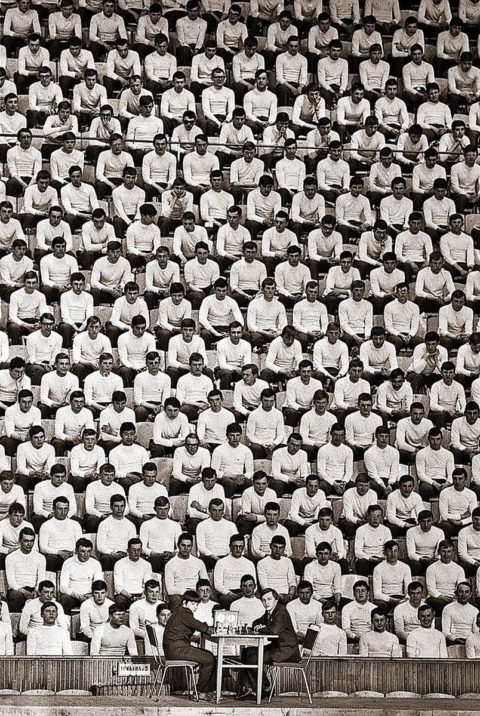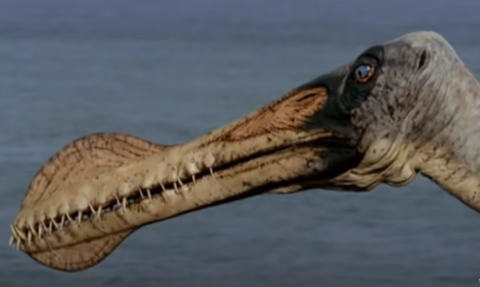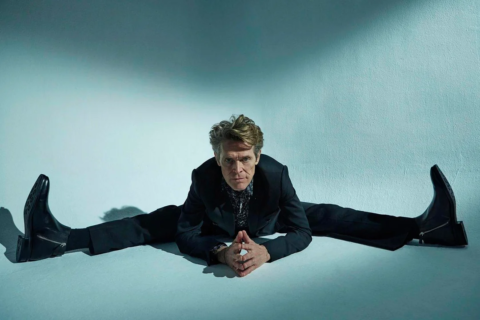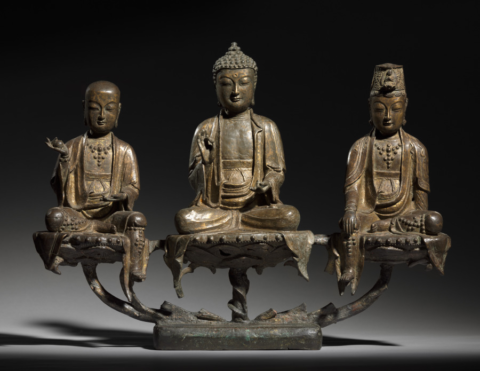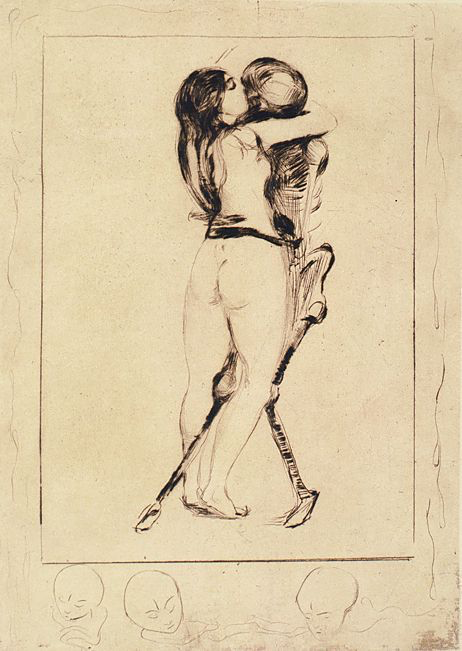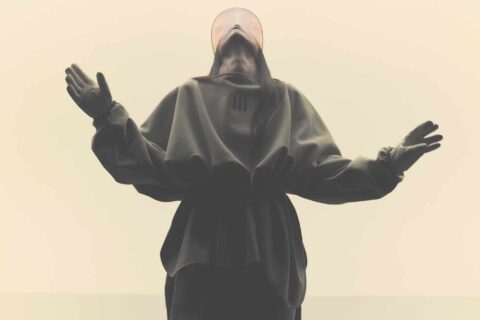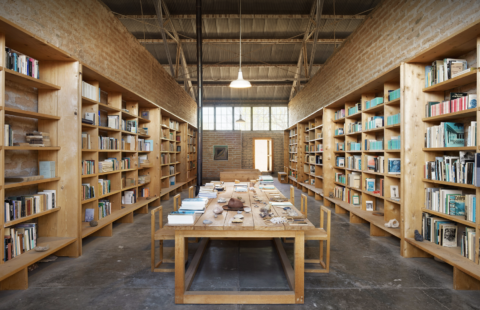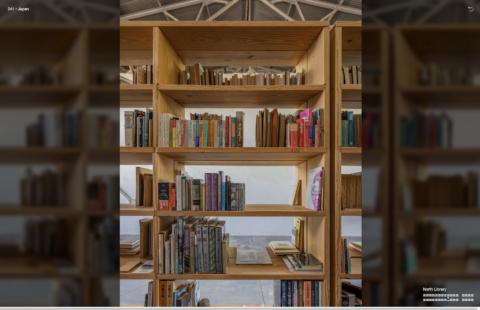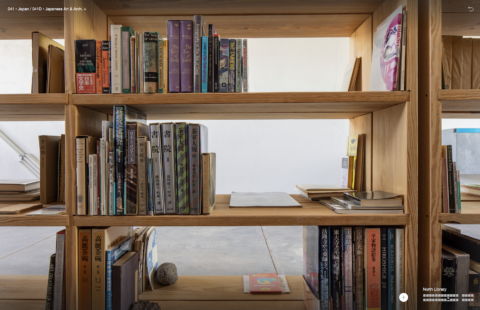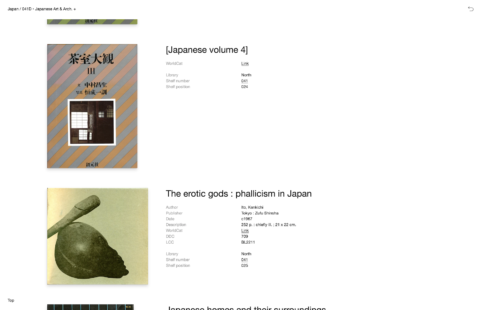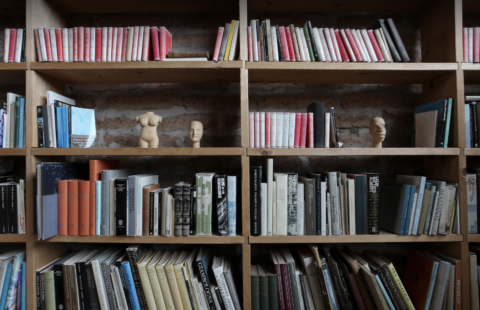hiroshi sugimoto – oscar wilde
curator ralph rugoff talks us through five of hiroshi sugimoto’s photos, revealing his fixation with humanity’s precarious place in history
“my camera is like a time machine” confessed hiroshi sugimoto, the japanese photographer, who, since the 1970s, has been radically rethinking and expanding the medium. known for creating large-format, black-and-white images, sugimoto’s works appear to freeze time as a means to investigate humanity in a deeper, metaphysical sense. in his own words, his work is an attempt to capture “the essence of time itself”.
for the first time in britain, a major survey of the renowned tokyo-born photographer is open at london’s hayward gallery. aptly titled time machine, the retrospective assembles key works from his 50-year practice, revealing his fixation with humanity’s precarious place in history. beguiling and uncanny, his shots veer towards abstraction; simultaneously attracting and confounding the viewer. they invite us to contemplate representations of reality, or something more transcendental – beyond our cognitive faculties.
in conversation with another, curator ralph rugoff argues that sugimoto “uses the camera as a tool for thinking”. below, he spotlights five key works from the artist’s five-decade career.
hiroshi sugimoto – polar bear, 1976
“works such as polar bear convince many people that sugimoto is a wildlife photographer. but the polar bear in this photograph is not a real one. it’s a piece of stuffed, taxidermy in a display at new york’s american museum of natural history which he visited in 1974. this is an example of sugimoto’s diorama pictures, which draw from the early history of photography – when 19th-century figures such as louis daguerre used staged, fake backdrops in their photography studios. cultural theorists such as walter benjamin would then describe the diorama as an early precursor of photography. sugimoto is thinking about how dioramas were historically used to deceive the viewer. he wants to make the polar bear appear alive again, allowing the fake subject to appear completely real after being processed by the camera. nevertheless, death hangs over this image. in that sense, his diorama works are all like memorials.”
hiroshi sugimoto – goshen, indiana, 1980
“one night, sugimoto was working late in the museum taking these diorama pictures. then the lyrics of a song came into his head, the line: ‘let the light shine on you’. he had a vision of filming in a movie theatre. sugimoto asked himself: what would it look like if i left my camera open for the whole movie? he imagined it would create this intense, glowing light. it’s almost as if the screen has sucked everybody out of the theatre into this kind of white void. sugimoto was thinking about movie theatres as secular spaces in which people look for a certain kind of collective emotional or transcendental experience. the movie theatre represents the sublime. and in this time, the empty movie theatre – devoid of people – paradoxically represents a void, which nevertheless feels very present.”
hiroshi sugimoto is represented by the marian goodman gallery
hiroshi sugimoto – lake superior, cascade river, 1995
“lake superior, cascade river is part of a series sugimoto started in the 1990s. i chose this photograph because it so obviously relates to painting, and in some ways, you could argue sugimoto creates work more like an abstract painter than a photographer. this could be a rothko. in reality, it’s an example of his seascapes, which he began in the 1980s. by the time he took this shot, he had probably photographed over 200 seas around the world. he took this photograph just before the sun rose, so you see the light from the sun that’s coming up; it’s going directly in the clouds, over the water, and then the water is reflecting that white light above it. i reference rothko because he was a big influence on sugimoto. rothko was a painter conveying rather than illustrating emotional states. that’s something that sugimoto has spoken about in relation to his work; he’s trying to project his own thoughts and feelings onto his photographs, rather than document things that already exist in the world. in that sense, even though we know him as a photographer, his work stands outside of photography. his work isn’t about documenting the world.” excerpts from an article in “another magazine”. by ac
 a visual collective outlet of inspiration
a visual collective outlet of inspiration